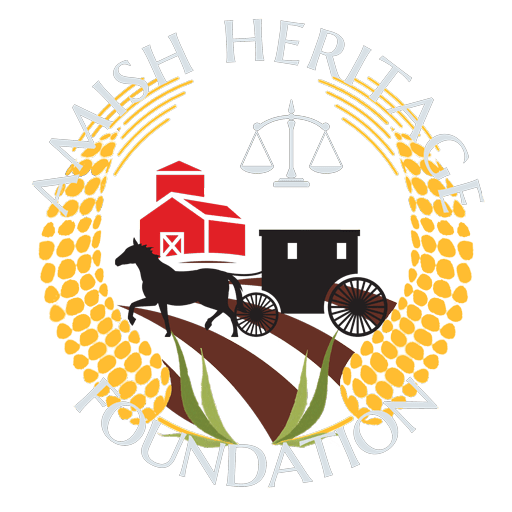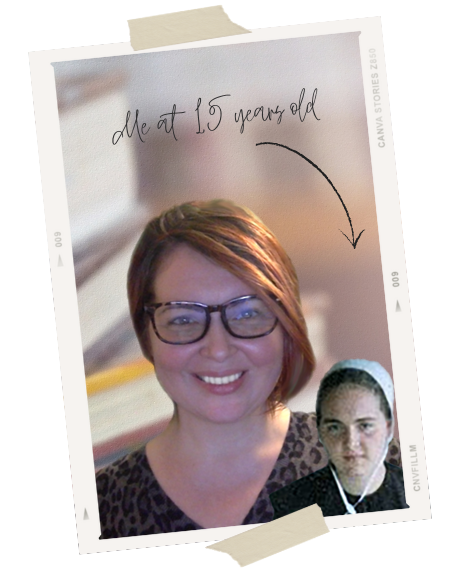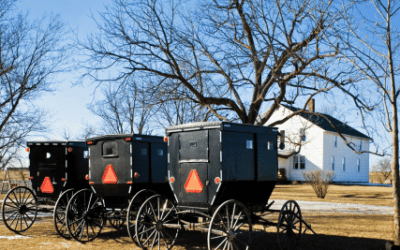If you’d like to know how to celebrate the Easter holiday the Amish way, I share my practicing Amish experiences of various aspects below, from the Easter bunny to Easter egg hunts to church services.
Good Friday
The Amish Easter tradition celebrates Good Friday (as the story goes, the day that Jesus was crucified) with a fast all morning, reading the Bible, and praying. But the fasting, Bible reading, and praying is only required of baptized members, not unbaptized children and teens. As soon as the clock passes the noon mark, the fast is over. I have vivid memories of my birth parents talking about how hungry they were and eyeing the clock all morning to see when they’d be allowed to eat again. I dreaded the thought of ever having to be forced to wake up with an empty stomach and go until noon with no food lest I’d end up in hell for breaking that Amish religious law.
I much preferred keeping our particular family tradition for unbaptized members on Good Friday and Easter Sunday mornings. That was eating shredded wheat. Even as I’m writing this, I can feel the crunchy texture of the wheat bales on the outside and the softer strings on the inside when I crushed the bale into my stainless steel bowl. Easter was the only time of year that we kids were allowed to have shredded wheat. The rest of the year we had cornflakes, the cheapest store-bought cereal at the time, and homemade grape-nuts or granola.
Good Friday was the only religiously mandated non-Sunday day off of the year besides Christmas. There was no school and no work (except for feeding the animals and milking the cows or goats). It’s possible that some Amish communities also celebrate the Monday after Easter; I have to fact check this but all I remember is Friday and Sunday as the days required to observe the resurrection story.
Easter Bunny
When I was younger, my birth mother would sing the song “Here Comes Peter Cottontail” during Easter. But when we moved to a community that allowed more material conveniences (e.g., phones in barns), we were no longer allowed to sing secular songs. The punishment for using more modern tools was to pretend we were more pious.
Now that I’m not a practicing Amish (nor practicing any religion) and have learned that most of Christianity is plagiarized from non-Christian ancient traditions, I love reclaiming this childhood song that brought me joy as a kid.
Easter Eggs
Some Amish allow their children to dye Easter eggs and have Easter egg hunts at home and at school. Some communities also allow school children to color pictures of secular Easter images and hang them up in the Amish schoolhouse for decoration.
But other Amish communities forbid all non-religious pictures and activities.
Dying eggs and taking turns to hide and hunt for them in the yard with my siblings and friends was one of my favorite activities of the year.
Easter Basket
Almost every year, one of our non-Amish neighbors would stop by with an Easter egg basket filled with goodies for us kids. If we got lucky, more than one non-Amish person gave us a gift basket. I adored the baskets. They were so pretty and “English”.
My parents never bought such baskets for us children, so we’d have to take turns using the special one for our egg hunts. Whoever didn’t have the pretty Easter basket used a sand bucket or ice cream pail.
Easter Chicks
Almost every Easter, my birth father would buy us jelly beans and sometimes yellow Easter marshmallow chicks, too, as a special treat. I loved the cute little chicks so much and wished I could keep them all year!
Jesus and the Cross
Crosses aren’t things you’ll likely see in traditional Amish homes. The religion forbids pictures and statues of Jesus, as well as crosses.
But you might find some Amish craftsmen who make wood crosses to sell to non-Amish. And if any of these crosses are in an Amish home, it would most likely only be to serve a useful purpose, such as a coat rack.
Easter Church Services
Most people aren’t aware that we traditional Amish don’t have church buildings (with the exception of one or so of the oldest communities). We have services in our homes.
We attend church every other Sunday and we don’t have services on Easter itself, unless it falls on our “church” Sunday. That said, people who live in a community with more than one church district will often attend services in another district if Easter falls on their “in between” Sunday. We hear about Good Friday and Jesus’ resurrection on the Sundays before Easter if we don’t have church in our own district that day. Like Good Friday, baptized members are required to fast all morning and read the Bible.
Bible Verses
The Bible verse below, or the first line of it, is often used during the Easter season as an opening to written letters. Similar to Christians posting this verse on social media, many Amish women and girls reference this verse in their letters during the Easter season. I say “women and girls” as opposed to men or boys because the majority of letter writing is done by the former.
He is not here; he has risen! Remember how he told you, while he was still with you in Galilee: "The Son of Man must be delivered over to the hands of sinners, be crucified and on the third day be raised again." - Luke 24:6-7
Easter Flowers: Tulips
I grew up associating tulips with Easter and spring. Often blooming tulips were part of the yardscape when we hunted for Easter eggs.
When I got older, we moved to a community in which even dying eggs at home was a violation of the religion. Not getting to engage in one of my favorite activities of the year was crushing. Coloring eggs had been a creative outlet for me.
Disclosure: This post contains affiliate links.

“To education and children’s rights”
— Torah Bontrager, Executive Director, Amish Heritage Foundation



